Digital Poster
Ensuring Precision in Quantitative Imaging: Quality Assessment, Repeatability, & Reproducibility
ISMRM & ISMRT Annual Meeting & Exhibition • 10-15 May 2025 • Honolulu, Hawai'i

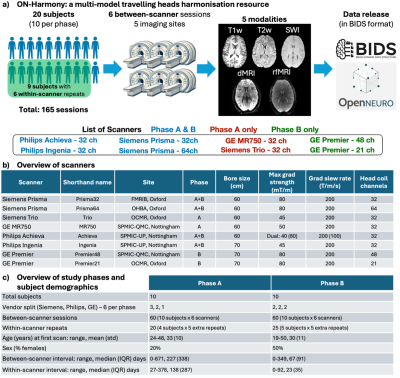 |
Computer Number: 1
1658. ON-Harmony:
A multi-site, multi-modal travelling-heads resource for brain
MRI harmonisation
S. Warrington, A. Torchi, O. Mougin, J. Campbell, A. Ntata,
M. Craig, S. Assimopoulos, F. Alfaro-Almagro, K. Miller, M.
Jenkinson, P. Morgan, S. Sotiropoulos
Sir Peter Mansfield Imaging Centre, Mental Health and Clinical Neurosciences, School of Medicine, University of Nottingham, Nottingham, UK, Nottingham, United Kingdom
Impact: Our openly-released multimodal brain MRI
harmonisation resource considers a range of vendors and
scanner generations (wide/narrow bore, low/high gradients,
different coil numbers). It can therefore enable powerful
studies of between-scanner effects and provide a testbed for
evaluation of harmonisation approaches.
|
|
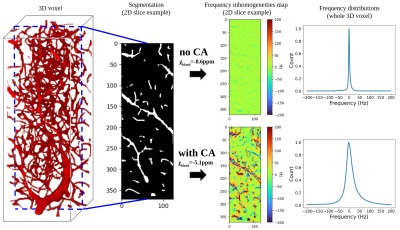 |
Computer Number: 2
1659. MR-WAVES:
MR simulations from 3D realistic microvascular networks in a few
seconds
T. Coudert, A. Delphin, M. Marçal, A. Barrier, B. Lemasson,
E. Barbier, T. Christen
Univ. Grenoble Alpes, INSERM U1216, Grenoble Institut Neurosciences, GIN, Grenoble, France
Impact: We propose a deep learning-based simulation tool
for rapid MR signal generation that accounts for
microvascular susceptibility and water diffusion effects.
This tool could enhance our understanding of the BOLD effect
and improve microvascular parameter quantification via MRF
methods.
|
|
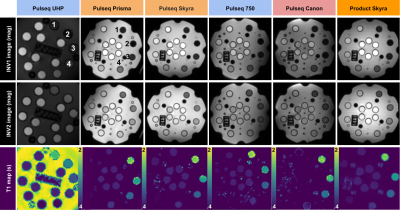 |
Computer Number: 3
1660. Vendor-neutral
MP2RAGE with Pulseq in VENUS: Three vendors and five scanners
A. Karakuzu, A. Hagiwara, W. Uchida, K. Kamagata, S. Fujita,
B. Tasdelen, J-F Nielsen, S. Aoki, N. Stikov
Polytechnique Montreal, Montreal, Canada
Impact:
Successfully deployed to five 3T scanners from three vendors, Pulseq-MP2RAGE standardizes the entire workflow using VENUS. This approach paves a rigorous path to elevate quantitative MRI to a metrological standard, unlocking the estimation of measurement uncertainties free from vendor-native discrepancies. |
|
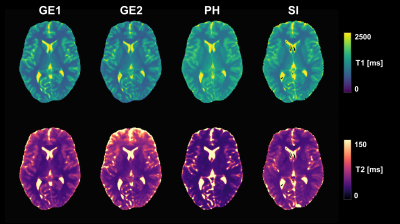 |
Computer Number: 4
1661. Multi-vendor
reproducibility of joint T1-T2 transient-state relaxometry using
platform-specific implementations at 3T
M. Lancione, M. Cencini, D. Aquino, C. Baldoli, M. Elia, F.
Ghielmetti, D. Montanaro, I. Neri, A. Nigri, R.
Pasquariello, S. Pettinato, S. Romano, A. Sbrizzi, P. Scifo,
O. Van der Heide, E. Versteeg, L. Biagi, M. Tosetti
IRCCS Stella Maris Foundation, Pisa, Italy
Impact: Transient-state relaxometry represents a broadly
applicable method for quantitative imaging. The assessment
of inter-site reproducibility provides a preliminary
indication of its sensitivity in detecting pathologies in a
multi-center study.
|
|
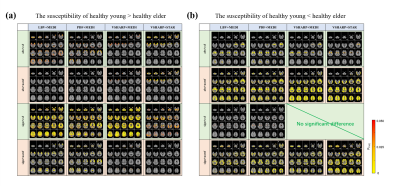 |
Computer Number: 5
1662. The
Impact of Reconstruction Methods, Reference, and Signed/Absolute
Value on Voxel-Wise Analysis of Quantitative Susceptibility
Mapping
Y. Tang, H. Zhong, G. Li, S. Fang, Y. Song, Y. Wang, J. Li
East China Normal University, Shanghai, China
Impact: This study revealed inconsistencies in results
arising from factors such as reconstruction methods,
reference choices, and statistical indicators in voxel-wise
QSM analysis. Careful consideration of these factors is
essential to improve accuracy and reliability in future
voxel-wise QSM research.
|
|
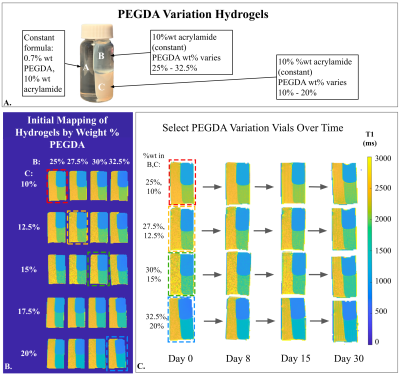 |
Computer Number: 6
1663. Highly
Crosslinked pAA-PEGDA Hydrogels for T1 modification in
Quantitative, Anthropomorphic Phantoms
A. Falk, K. Gopalan, I. Wu, J. Huey, A. Arias, C. Liu, M.
Lustig
University of California, Berkeley, Berkeley, United States
Impact: A reliable, quantitative method for T1
modification in boundaryless hydrogel systems presents a
significant opportunity for development in anthropomorphic
phantoms. These phantoms have the potential to accelerate
the development of quantitative MRI by making research more
standardized, reliable, and accessible.
|
|
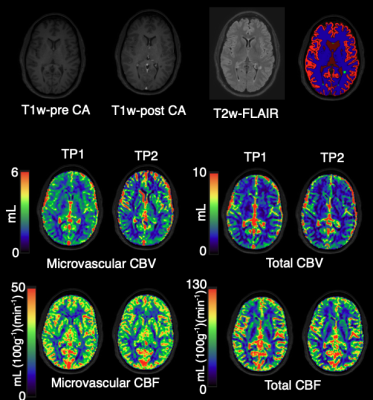 |
Computer Number: 7
1664. Test-Retest
Reliability of DSC-MRI Perfusion Metrics in Multiple Sclerosis
Patients and Healthy Controls
M. Soltany Sadrabadi, L. Ott, M. McElvogue, A. Borazanci, M.
Robers, R. Dortch, A. Stokes
Barrow Neurological Institute, Phoenix, United States
Impact: These differences suggest microvascular
abnormalities in NAWM, potentially contrasting with the
stable metrics seen in lesion areas or healthy
controls.These findings underscore the reliability of
DSC-based perfusion MRI and its utility in tracking
hemodynamic changes in MS.
|
|
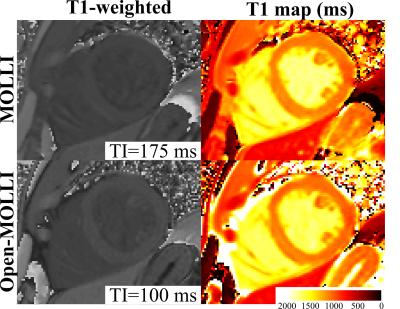 |
Computer Number: 8
1665. Cardiac
T1-mapping using Open-MOLLI at 3T: a repeatability study
A. Gaspar, T. Küstner, M. Schwartz, T. Correia, R. Nunes
Instituto Superior Técnico, Universidade de Lisboa, Lisbon, Portugal
Impact: The open-source myocardial T1 mapping
(Open-MOLLI) was tested at 3.0T for repeatability with
similar results to previous works at 1.5 T. This work shows
that this sequence can be easily applied in inter-scanner
reproducibility studies.
|
|
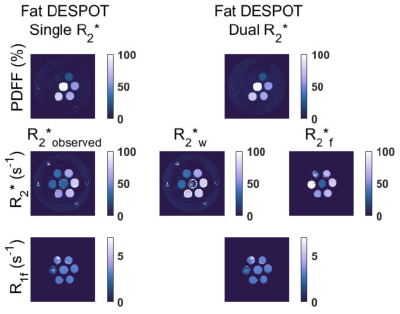 |
Computer Number: 9
1666. Accuracy
and precision of R2* and fat-specific R1 from multiparametric
relaxation mapping in fat-water mixtures
N. Panov, R-C Bider, V. Fortier, I. Levesque, J. Campos
Pazmino
McGill University, Montreal, Canada
Impact:
We determined that the single-R2* assumption has negligible effects on R1f precision and accuracy while enabling robust and precise estimation of R2*observed. Thus, the single-R2* assumption is a preferable alternative to the dual-R2* assumption. |
|
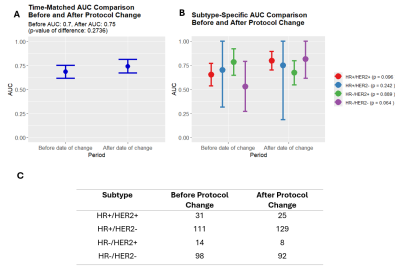 |
Computer Number: 10
1667. Reducing
Protocol Variability Enhances Predictive Performance of Breast
MRI Biomarkers in a Multicenter Clinical Trial
P. Metanat, N. Onishi, W. Li, J. Gibbs, L. Wilmes, N. Le, M.
Gibbons, T. Bareng, M. Watkins, E. Price, B. Joe, J. Kornak,
C. Yau, D. Wolf, M. Magbanua, B. LeStage, I. Imaging Working
Group, I. Investigator Network, J. Perlmutter, D. Yee, W.
Symmans, H. Rugo, C. Isaacs, R. Shatsky, A. DeMichelle, L.
van 't Veer, L. Esserman, N. Hylton
University of California, San Francisco, San Francisco, United States
Impact: Enforcing stricter adherence to MRI protocol
improved FTV’s predictive accuracy for identifying
pathological complete response (pCR) in breast cancer
neoadjuvant therapy, increasing reliability and data
consistency within the I-SPY 2 trial’s multicenter
framework.
|
|
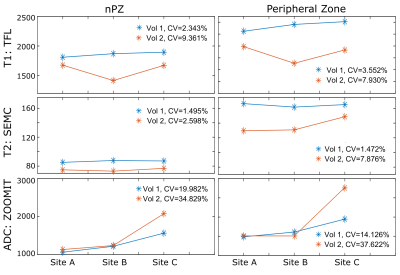 |
Computer Number: 11
1668. Cross-vendor
repeatability and reproducibility of quantitative MRI for
prostate cancer applications
U. Yang, P. Bolan, S. Noworolski, G. Metzger
University of Minnesota, Minneapolis, United States
Impact: This work demonstrates initial results at
characterizing repeatability and reproducibility of
quantitative MRI (qMRI) across vendors and sites, a critical
step needed to harmonize results prior to evaluating their
use in developed computer-aided diagnostic tools for
prostate cancer.
|
|
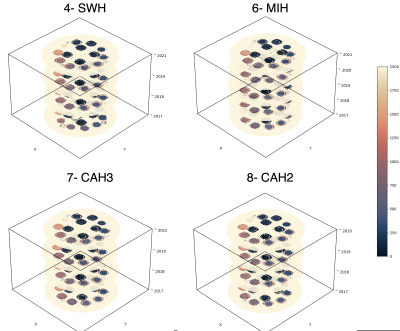 |
Computer Number: 12
1669. Longitudinal
Validation of Quantitative T1 MRI Measurements: A Six-Year
Multi-Site Analysis Using the ISMRM/NIST Reference System
J. Martinez, A. McCann, J. Sharp, C. McGrath, K. Keenan
National Institute of Standards and Technology (NIST), Boulder, United States
Impact: This study demonstrates that standardized T1
relaxometry protocols yield consistent and reproducible
measurements of the ISMRM/NIST phantom across multiple MRI
centers over six years, supporting the clinical
applicability of quantitative MRI for multi-center disease
monitoring and treatment evaluation.
|
|
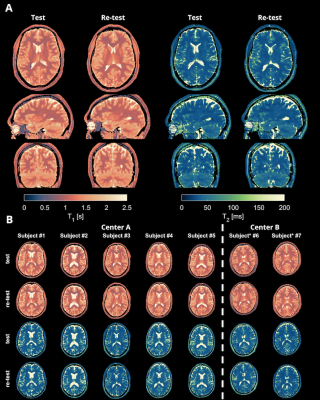 |
Computer Number: 13
1670. Towards
clinic-ready relaxometry with MR-STAT: multi-site repeatability,
motion detection and integration in the clinical data workflow
E. Versteeg, O. van der Heide, F. Ghielmetti, M. Lancione,
M. Tosetti, L. Biagi, M. Cencini, A. Nigri, D. Aquino, C.
van den Berg, A. Sbrizzi
University Medical Center Utrecht, Utrecht, Netherlands
Impact: This work shows that quantitative MRI (MR-STAT)
yields repeatable results and can be incorporated in a
clinical data workflow by using a DICOM-based reconstruction
and automatic motion detection.
|
|
 |
Computer Number: 14
1671. A
T1-independent sequence enables accurate quantitative proton
density mapping from standard MRI protocols in human brain
K. Jalali, P. Seres, A. Wilman
University of Alberta, Edmonton, Canada
Impact: A rapid (20 s) T1-independent MRI sequence
allows quantification of accurate CSF-referenced brain water
content when combined with common protocols, enabling an
additional quantitative parameter for examining MS disease
progression.
|
|
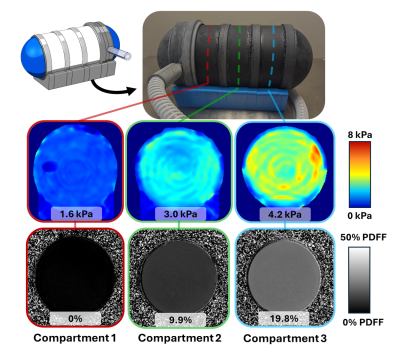 |
Computer Number: 15
1672. Combined
Quantitative Fat and Stiffness Phantom for Simultaneous CSE-MRI
and MRE Quality Assurance of Steatotic Liver Disease
D. Rutkowski, R. do Vale Souza, J. Guerrero-González, J.
Kammerman, R. Moskwa, M. Urban, P. Rossman, K. Pepin, J.
Heilman, D. Hernando, S. Reeder, J. Brittain
Calimetrix, LLC, Madison, United States
Impact: A quantitative three-compartment fat/stiffness
phantom was developed and optimized to address the need for
standardized quality assurance of quantitative MRI
biomarkers of steatotic liver disease.
|
|
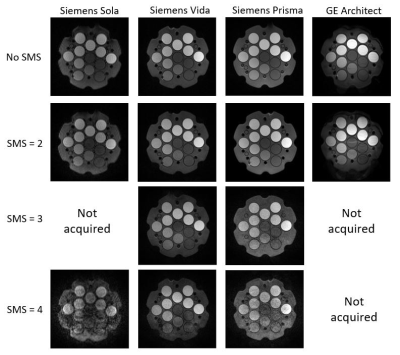 |
Computer Number: 16
1673. The
variability of mean ADC measurements with simultaneous
multi-slice imaging in a NIST/QIBA diffusion phantom.
M. Marzetti, Y. Wang, I. Teh, P. Duce, S. Boyd, T.
Karaulanov, G. Bourke, R. Wade
Leeds Teaching Hospitals NHS Trust, Leeds, United Kingdom
Impact: Using SMS factors of 2 has the potential to
speed up MRI DWI acquisitions without biasing ADC, improving
patient experience and throughput while reducing motion
artefacts. However, higher SMS factors may be unreliable,
particularly at higher ADC values.
|
The International Society for Magnetic Resonance in Medicine is accredited by the Accreditation Council for Continuing Medical Education to provide continuing medical education for physicians.